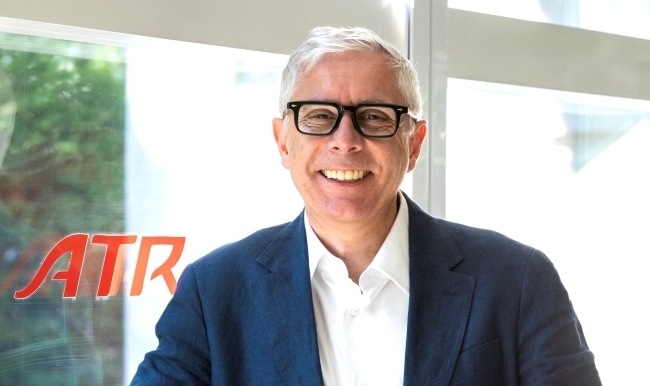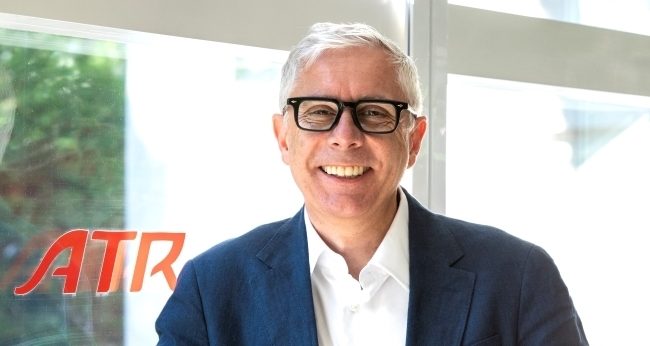Transport / France-USA-Today
ATR: The aircraft maker reconnecting America’s regional economy
ATR, the global leader in regional turboprop aircraft, is positioning itself as a critical player in restoring U.S. air connectivity – with a sustainable edge.

Christopher Jones, Head of Region Americas and Managing Director at ATR
French investment has played a decisive role in shaping the global aerospace industry – and, perhaps unexpectedly, nowhere is that more evident than in the United States. In recent decades, French aviation firms have expanded their American presence across manufacturing, maintenance, R&D, and sustainable technologies – deepening bilateral cooperation in one of the most competitive and strategically vital sectors in the world.
At the heart of this transatlantic dynamic is ATR, the Toulouse-based manufacturer of regional turboprop aircraft and a joint venture between Airbus and Leonardo. While its origins are European, ATR’s strategic posture is increasingly focused on the Americas – particularly the U.S., where its aircraft are emerging as a timely solution to a growing challenge in domestic aviation.
“ATR is the largest regional manufacturer in its space,” says Christopher Jones, Head of Region Americas and Managing Director at ATR Americas. “With over 1,300 aircraft in operation worldwide, we’re re lied on extensively for connectivity – especially in under-served or remote communities.

Christopher Jones, Head of Region Americas and Managing Director at ATR
Jones, who took the helm of ATR’s U.S. operations in 2024, is pursuing a targeted expansion strategy aimed at addressing what he views as a systemic shortfall in regional air service. “We’re addressing a very real issue in the U.S. market: the erosion of regional connectivity. Since 2000, over 800 markets have been abandoned because older, less efficient regional jets couldn’t make them profitable. ATR can change that.”
The ATR 42-600 and 72-600 models have become a mainstay for regional routes, prized for their fuel efficiency, low emissions, and cost-effective performance. These features make them particularly suited for short-haul flights and essential air service programs that remain critical in many parts of the U.S. “In the 100-300 nautical miles range, nothing beats the economics of an ATR,” Jones says.
The company’s value proposition is not limited to cost efficiency. ATR is also investing in next-generation technologies designed to align with long-term sustainability and performance standards. “We’re targeting 100% sustainable aviation fuel (SAF) compatibility by 2030. We’re rolling out Starlink connectivity, upgrading our air craft with more efficient engines, and exploring the feasibility of our EVO platform, around mid-2030s – a 100% SAF-capable next-gen aircraft concept, potentially with a hybrid capability,” Jones explains. “But we’re not rushing into new technology for the sake of it. We’re doing it to future-proof the air craft for the next 20 years.”
“We’re targeting 100% sustainable aviation fuel (SAF) compatibility by 2030. We’re rolling out Starlink connectivity, upgrading our air craft with more efficient engines, and exploring the feasibility of our EVO platform, around mid-2030s – a 100% SAF-capable next-gen aircraft concept, potentially with a hybrid capability.”
This emphasis on measured innovation extends to the digital space. ATR is incorporating AI and advanced avionics to increase operational efficiency and reduce downtime – key factors in a segment of the industry where frequency and reliability are paramount. “We’re partnering with Swiss-AS to automate the flow between our manuals and the airline’s maintenance procedures,” says Jones. “This kind of digital linkage significantly cuts response time, which matters when you’re f lying four to five cycles a day.”
While ATR’s strategy is global, its American agenda is deeply local ized. For Jones, the mission is as much about economic revitalization as it is about aircraft performance. “For every 10% increase in air service, there’s a 6% increase in GDP. We’re not just selling planes – we’re restoring opportunity.”
The timing is strategic. A wave of aging 50-seat jets is exiting service, leaving a gap that many smaller airports are struggling to f ill. ATR sees a clear opportunity to step in with an aircraft family that is already well-established, with proven performance metrics and lower operating costs. “Hundreds of 50-seat jets are aging out, and underserved communities need viable air links. ATR offers the economics and comfort to bridge that gap.” He cites growing interest from U.S. airport authorities eager to restore lost connectivity.

The company’s credibility is reinforced by strong commercial partnerships. FedEx recently ordered ten additional ATR 72-600 freighters, a move Jones sees as a key validation. “That endorsement from a global logistics leader underscores the strategic value of our aircraft – not just for passengers but for cargo, e-commerce, and last-mile logistics,” Jones notes.
Recently, JSX announced its intent to begin ATR operations in late 2025. The Texas-based, award-winning public charter air carrier will lease two ATR 42-600s to expand its hop-on service, reaching more private terminals and underserved airports across the U.S. This announcement charts future growth for both JSX and ATR, with a Letter of Intent for 15+10 new aircraft – either ATR 42-600s with 30 premium seats or All-Business Class ATR 72-600s with 30 seats. This partnership marks ATR’s entry into the U.S.’ robust public charter market, opening pathways to new route opportunities with industry-leading airfield performance, quieter propulsion, and lower, more efficient operating costs.
Over the next 20 years, ATR projects global demand for 2,100 aircraft – 255 of them in North America alone. The combination of market need, operational efficiency, and sustainability puts the company in a position of considerable leverage. “The combination of connectivity, sustainability, and economic logic is too compelling to ignore,” says Jones. “We’re in a sweet spot, and we’re ready to deliver.”
ATR’s French origin is largely beside the point, he adds. “What matters is our track record,” Jones emphasizes. “Aerospace is global. We’re respected not as a ‘French manufacturer,’ but as the leading name in regional aviation.”
